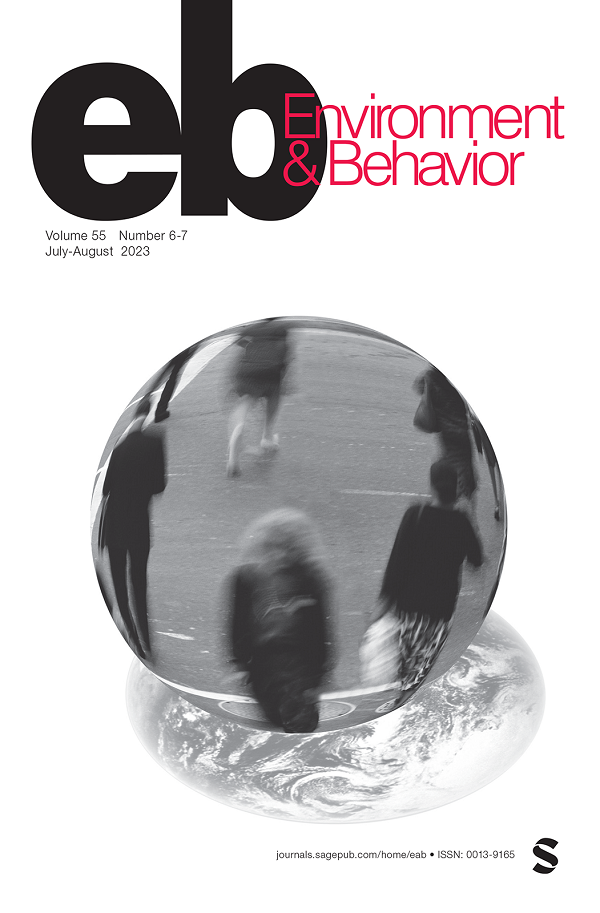邻里性质是育儿实践、婴儿-父母关系和婴儿社会运动功能的生态前兆吗?
IF 4.6
2区 心理学
Q1 ENVIRONMENTAL STUDIES
引用次数: 0
摘要
培养关系对儿童的适应性发展至关重要。该研究的目的是调查自然资源的可用性是否与早期养育父母的做法、母婴关系和婴儿的社会情感功能有关。数据来自澳大利亚气质项目(n = 809名婴儿对515名居住在澳大利亚维多利亚州的父母),并与住宅绿化度(即植被指数的归一化差异)进行了横断面联系。在1600 m网络半径和育儿实践、母婴关系或婴儿社会情感功能。敏感性分析在很大程度上证实了这一发现(即NDVI在100、250、500和1000范围内 m和到公园的距离)。到公园的距离越短,养育子女的敌意就越小。更多住宅绿化(1000和1600 m) 在探索性分析中,与压力最大的父母中更强的父子关系和更具敌意的育儿方式有关。住宅的绿色可能是父子关系的社会生态前兆。本文章由计算机程序翻译,如有差异,请以英文原文为准。
Is Neighborhood Nature an Ecological Precursor of Parenting Practices, Infant-Parent Bonding, and Infant Socioemotional Function?
Nurturing relationships are crucial for adaptive child development. The objectives of the study were to investigate whether nature availability was associated with early nurturing parenting practices, mother-infant bonding, and infant socioemotional function. Data were from the Australian Temperament Project (n = 809 infants to 515 parents residing in Victoria, Australia) and were linked cross-sectionally to residential greenness (i.e., Normalized Difference in Vegetation Index). There were no observable associations between residential greenness within a 1,600 m network radius and parenting practices, mother-infant bonding, or infant socioemotional function. The findings were largely corroborated by sensitivity analyses (i.e., NDVI within 100, 250, 500, and 1,000 m and distance to park). Shorter distances to a park were associated with less hostile parenting. More residential greenness (1,000 and 1,600 m) was associated with stronger father-infant bonding and more hostile parenting amongst the most stressed parents in exploratory analyses. Residential greenness might be a socioecological precursor for father-infant bonding.
求助全文
通过发布文献求助,成功后即可免费获取论文全文。
去求助
来源期刊

Environment and Behavior
Multiple-
CiteScore
13.30
自引率
1.80%
发文量
13
期刊介绍:
Environment & Behavior is an interdisciplinary journal designed to report rigorous experimental and theoretical work focusing on the influence of the physical environment on human behavior at the individual, group, and institutional levels.
 求助内容:
求助内容: 应助结果提醒方式:
应助结果提醒方式:


